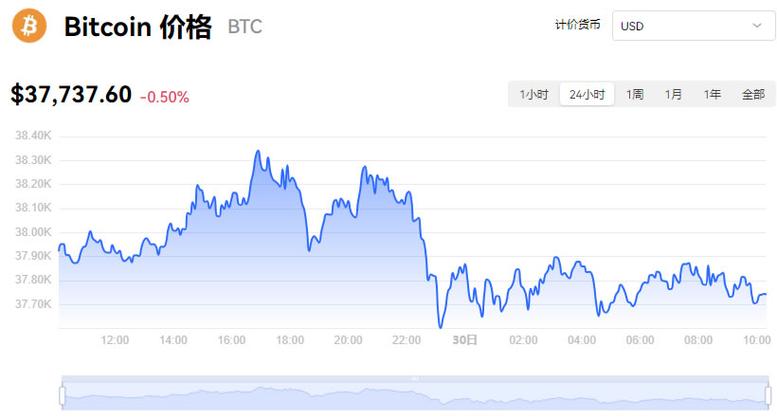BTC/USD: The Rise and Evolution of Bitcoin in the Global Economy
 summary:
BTC/USD: Bitcoin在全球经济中的崛起和演变。这篇概述将探讨比特币如何逐渐成为一个全球性的现象,其价值和影响如何随着时间的推移而增长,以及它在金融体系中的地位如何逐渐稳...
summary:
BTC/USD: Bitcoin在全球经济中的崛起和演变。这篇概述将探讨比特币如何逐渐成为一个全球性的现象,其价值和影响如何随着时间的推移而增长,以及它在金融体系中的地位如何逐渐稳... BTC/USD: Bitcoin在全球经济中的崛起和演变。这篇概述将探讨比特币如何逐渐成为一个全球性的现象,其价值和影响如何随着时间的推移而增长,以及它在金融体系中的地位如何逐渐稳固。
In the realm of digital currencies, Bitcoin has emerged as a global phenomenon, revolutionizing the way we think about finance and payments. As the leading cryptocurrency by market capitalization, Bitcoin's price fluctuations, particularly the BTC/USD exchange rate, have attracted the attention of investors, enthusiasts, and the general public alike. In this article, we'll explore the rise of Bitcoin against the US dollar, its impact on the global economy, and the evolving landscape of this digital asset.
Introduction
Bitcoin, introduced in 2009 by an anonymous creator known as Satoshi Nakamoto, has grown from a mere curiosity to become a global phenomenon. As a decentralized digital currency, Bitcoin offers a unique alternative to traditional banking systems and has attracted investors from all over the world. The BTC/USD exchange rate has become a key indicator of the health and momentum of the cryptocurrency market.
The Early Days of Bitcoin
Bitcoin's early days were marked by low prices and limited adoption. The first known transaction involving Bitcoin occurred in 2010, when someone bought two pizzas using 10,000 BTC. At that time, the currency was largely unknown and was traded for negligible amounts. However, as word spread about Bitcoin's potential and its decentralized nature, interest began to grow, leading to a surge in the BTC/USD exchange rate.
The First Major Surge: 2013-2017
The first major surge in Bitcoin's price occurred between 2013 and 2017. During this period, Bitcoin's popularity grew rapidly as investors realized its potential as a store of value and a means of global payment. The BTC/USD exchange rate skyrocketed, reaching a peak in late 2017 when it surpassed $20,000 for the first time.
This surge was accompanied by increased adoption and institutional interest. Businesses began to accept Bitcoin as a payment method, and new use cases emerged for the digital currency. However, this period also saw significant volatility in the BTC/USD rate, with sharp corrections and fluctuations.
The Bear Market and Recovery: 2018-Present
Following the 2017 surge, Bitcoin experienced a bear market in 2018, with prices dropping significantly. However, this period of decline did not last long. As institutional interest grew and more businesses adopted Bitcoin, the BTC/USD exchange rate began to recover.
Today, Bitcoin is more popular than ever before. Its market capitalization continues to grow, and new use cases are emerging for this digital asset. The BTC/USD exchange rate has become a key indicator of global cryptocurrency market sentiment and is closely watched by investors worldwide.
Impact on the Global Economy
Bitcoin's rise has had a significant impact on the global economy. Its decentralized nature offers an alternative to traditional banking systems, particularly in countries where financial infrastructure is limited or non-existent. Bitcoin has also sparked innovation in the field of finance and has led to the development of new technologies and services related to cryptocurrencies.
Moreover, Bitcoin's popularity has attracted institutional investors and has led to the emergence of new investment vehicles such as Bitcoin ETFs and mining stocks. These investment vehicles have further propelled the growth of Bitcoin and have made it more accessible to investors who may not have the technical knowledge or resources to trade directly in cryptocurrencies.
The Evolving Landscape of Bitcoin
As Bitcoin continues to grow in popularity and value, its landscape is evolving rapidly. New technologies such as Lightning Network are emerging to improve scalability and transaction speed, making Bitcoin more viable as a means of payment. Additionally, privacy-focused cryptocurrencies are gaining popularity as users become more concerned about privacy issues related to digital transactions.
Moreover, regulatory frameworks are being established to regulate cryptocurrencies and ensure fair markets for investors. These regulations provide clarity and stability to the market but also create challenges for businesses operating in this space. Despite these challenges, Bitcoin remains resilient and continues to grow in popularity and value.
Conclusion
Bitcoin has revolutionized the way we think about finance and payments, offering a unique alternative to traditional banking systems. The BTC/USD exchange rate has become a key indicator of global cryptocurrency market sentiment and continues to attract investors worldwide. As Bitcoin continues to evolve and new technologies emerge, its landscape will continue to change but remain resilient against all challenges faced so far. With continued innovation and adoption, Bitcoin is poised to become an even more significant part of our financial system in the future.

